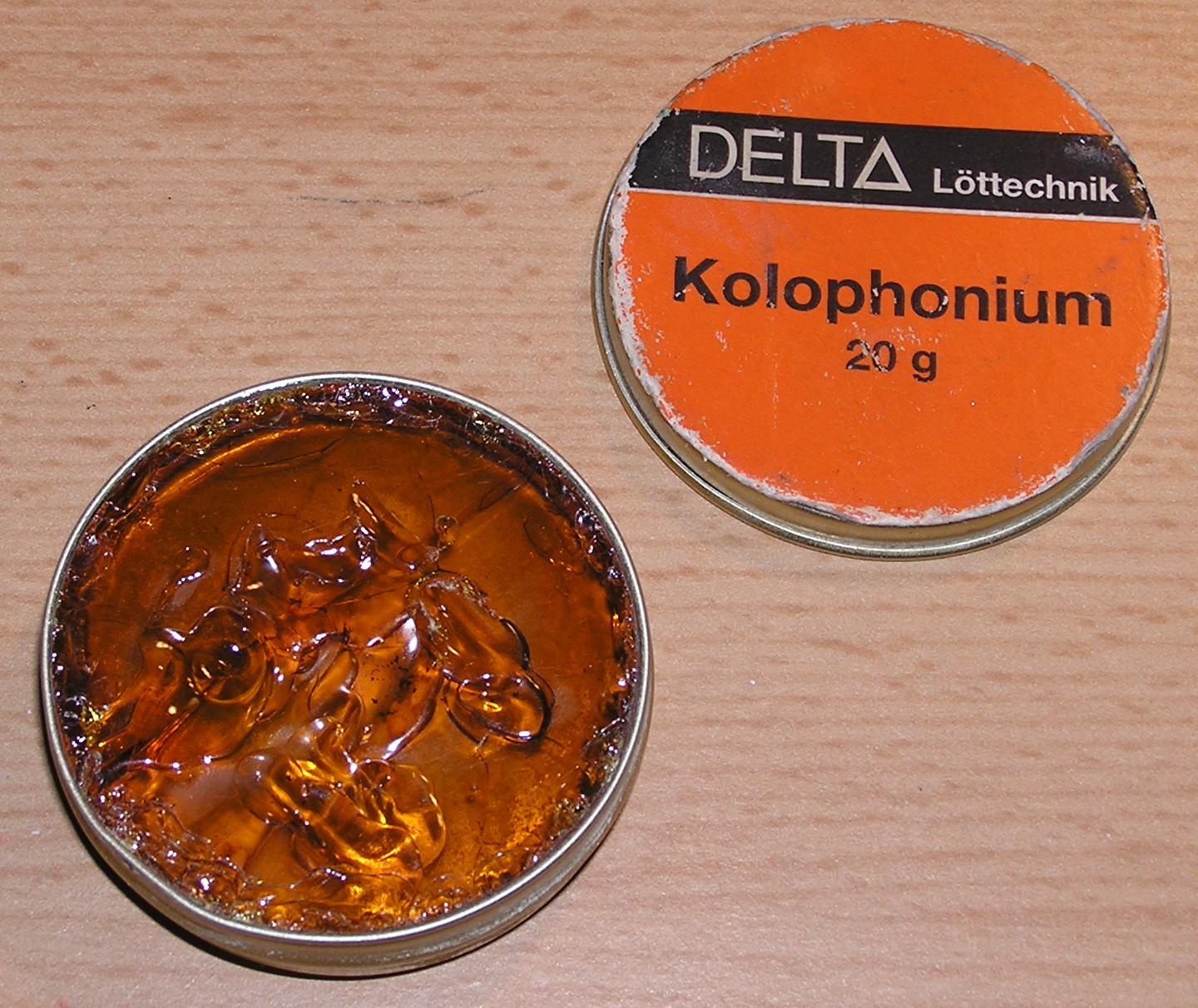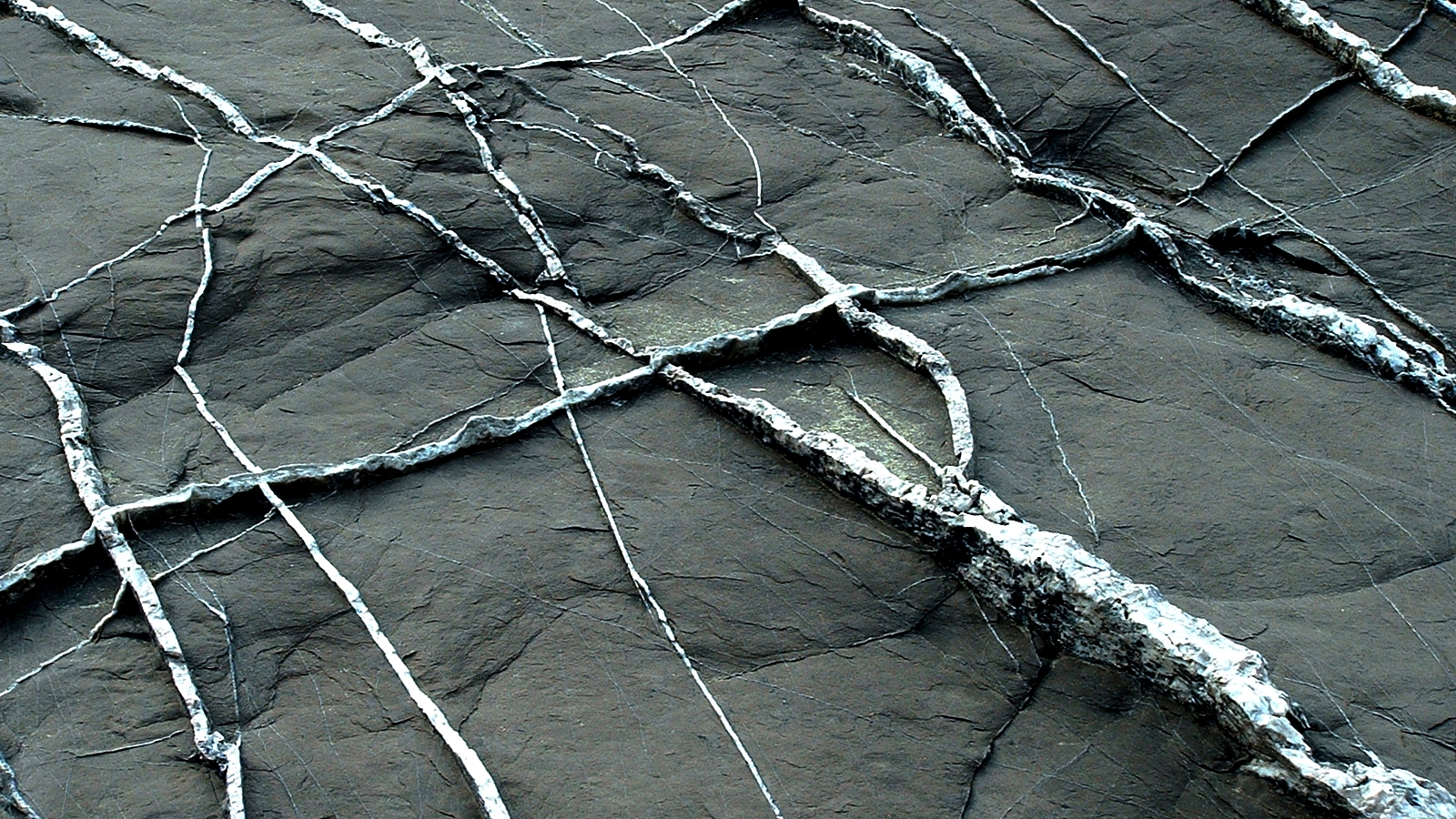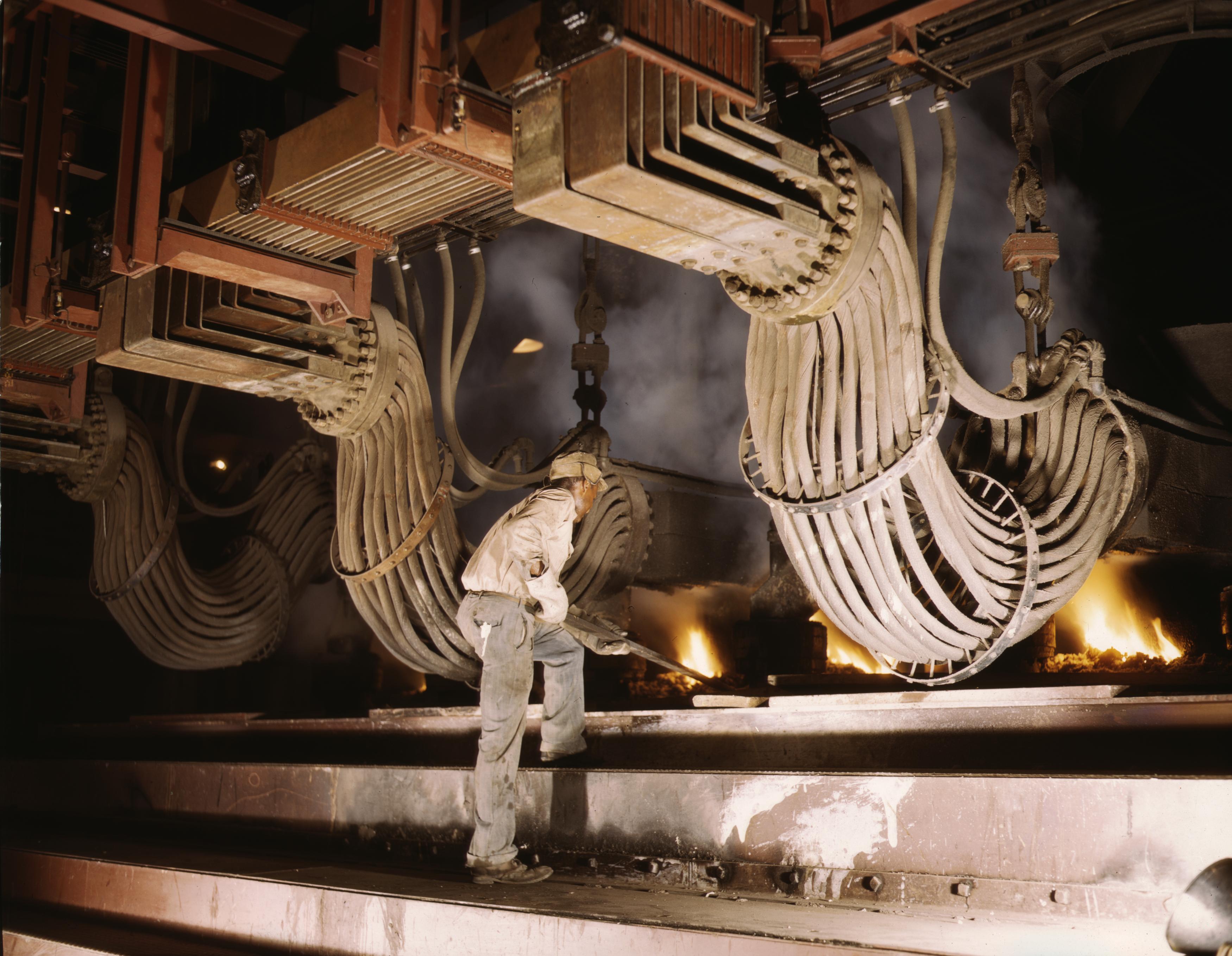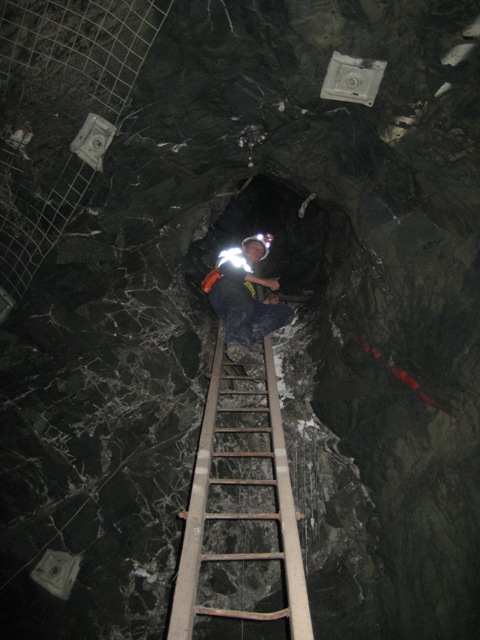|
Cuniptau Mines
Cuniptau Mines (a combination of the symbols Cu, Ni, Pt and Au) was a Canadian mining company from 1933 to 1937. It was incorporated in December 1933 under the leadership of B. W. Watkins with its headquarters based in Toronto, Ontario. The company was engaged in development of the Cuniptau Mine, a polymetallic ore deposit in Strathy Township of Northeastern Ontario. In later years Cuniptau Mines also acquired the Alexo Mine property in Clergue and Dundonald townships of Cochrane District. History and operations Development of the Cuniptau Mine began in 1933 with the sinking of a shaft and underground drifting on the shaft level. This was followed by deepening of the shaft to , a new level established at , drifting, crosscutting and raising in 1934. Operations in 1935 were confined mostly to surface mineral exploration. In 1936, the smelter was rebuilt to test out the possibilities of making a suitable matte from the mined ore. High-grade quartz vein material from the Cunip ... [...More Info...] [...Related Items...] OR: [Wikipedia] [Google] [Baidu] |
Toronto
Toronto ( ; or ) is the capital city of the Provinces and territories of Canada, Canadian province of Ontario. With a recorded population of 2,794,356 in 2021, it is the List of the largest municipalities in Canada by population, most populous city in Canada and the List of North American cities by population, fourth most populous city in North America. The city is the anchor of the Golden Horseshoe, an urban agglomeration of 9,765,188 people (as of 2021) surrounding the western end of Lake Ontario, while the Greater Toronto Area proper had a 2021 population of 6,712,341. Toronto is an international centre of business, finance, arts, sports and culture, and is recognized as one of the most multiculturalism, multicultural and cosmopolitanism, cosmopolitan cities in the world. Indigenous peoples in Canada, Indigenous peoples have travelled through and inhabited the Toronto area, located on a broad sloping plateau interspersed with Toronto ravine system, rivers, deep ravines, ... [...More Info...] [...Related Items...] OR: [Wikipedia] [Google] [Baidu] |
Cochrane District
Cochrane District is a district and census division in Northeastern Ontario in the Canadian province of Ontario. It was created in 1921 from parts of Timiskaming and Thunder Bay districts. In 2016, the population was 79,682. The land area of this district is , making it slightly smaller than the US State of Michigan and the second largest district in Ontario after Kenora District. The district seat is Cochrane. Bennet Lake Esker Kame Complex Conservation Reserve is located in Cochrane District. Subdivisions City Towns Townships Cree Nation reserves *Abitibi Indian Reserve No. 70 ( Wahgoshig First Nation) * Constance Lake 92 ( Constance Lake First Nation) *Factory Island 1 ( Moose Cree First Nation) *Flying Post 73 ( Flying Post First Nation) *Fort Albany 67 (Fort Albany First Nation) * Moose Factory 68 ( Moose Cree First Nation) *New Post 69 ( Taykwa Tagamou Nation) *New Post 69A ( Taykwa Tagamou Nation) Unorganized areas * North Part (includes the local services boards ... [...More Info...] [...Related Items...] OR: [Wikipedia] [Google] [Baidu] |
Temagami
Temagami, formerly spelled as Timagami, is a municipality in northeastern Ontario, Canada, in the Nipissing District with Lake Temagami at its heart. The Temagami region is known as ''n'Daki Menan'', the homeland of the area's First Nations community, most of whom are Anishinaabe (Ojibwe), living on Bear Island. The official name for this group is the Temagami First Nation. However, a larger group that includes these people, plus non-status residents and some non-residents is called the Teme-Augama Anishnabai. Some of the main tourist attractions within the community include old-growth red and white pine, Lake Temagami, Caribou Mountain, fishing, showings of Grey Owl from the 1930s, and over of canoe routes. It is also known as the staging point for cottage vacationing and wilderness canoeing trips on Lake Temagami, in Lady Evelyn-Smoothwater Provincial Park, and vast tracts of wilderness in the area. There are several outfitters here that cater to outdoor activi ... [...More Info...] [...Related Items...] OR: [Wikipedia] [Google] [Baidu] |
Diamond Drilling
Exploration diamond drilling is used in the mining industry to probe the contents of known ore deposits and potential sites. By withdrawing a small diameter core of rock from the orebody, geologists can analyze the core by chemical assay and conduct petrologic, structural, and mineralogical studies of the rock. It is also often used in the geotechnical engineering industry for foundation testing in conjunction with soil sampling methods. History Rodolphe Leschot is often cited as being the inventor of the first core bit in 1863. Early diamond drilling opened up many new areas for mineral mining, and was related to a boom in mineral exploration in remote locations. Before the invention of the portable diamond drill, most mineral prospecting was limited to finding outcrops at the surface and hand digging. In the late 1970s, General Electric pioneered the technology of polycrystalline diamond compacts (PDCs) as a replacement for natural diamonds in drill bits. Diamond drilling ... [...More Info...] [...Related Items...] OR: [Wikipedia] [Google] [Baidu] |
Flux (metallurgy)
In metallurgy, a flux () is a chemical cleaning agent, flowing agent, or purifying agent. Fluxes may have more than one function at a time. They are used in both extractive metallurgy and metal joining. Some of the earliest known fluxes were sodium carbonate, potash, charcoal, coke, borax, lime, lead sulfide and certain minerals containing phosphorus. Iron ore was also used as a flux in the smelting of copper. These agents served various functions, the simplest being a reducing agent, which prevented oxides from forming on the surface of the molten metal, while others absorbed impurities into the slag, which could be scraped off the molten metal. Fluxes are also used in foundries for removing impurities from molten nonferrous metals such as aluminium, or for adding desirable trace elements such as titanium. As cleaning agents, fluxes facilitate soldering, brazing, and welding by removing oxidation from the metals to be joined. In some applications molten flux ... [...More Info...] [...Related Items...] OR: [Wikipedia] [Google] [Baidu] |
Best Township, Ontario
Best Township is a geographic township comprising a portion of the municipality of Temagami in Nipissing District, Northeastern Ontario, Canada. It is used for geographic purposes, such as land surveying and natural resource explorations. Neighbouring geographic townships include Gillies Limited Township to the north, Banting Township to the west, Chambers Township to the southwest, and Strathy and Cassels townships to the south. Localities * Rib Lake * James Lake *Northland Pyrite Mine The Northland Pyrite Mine, also known as James Lake Mine, Rib Lake Mine, Harris Mine or simply Northland Mine, is an abandoned underground mine in Northeastern Ontario, Canada, located on the southwestern shore of James Lake in Best Township of ... Notes References * * * Townships of Temagami {{NorthernOntario-geo-stub ... [...More Info...] [...Related Items...] OR: [Wikipedia] [Google] [Baidu] |
Vein (geology)
In geology, a vein is a distinct sheetlike body of crystallized minerals within a rock. Veins form when mineral constituents carried by an aqueous solution within the rock mass are deposited through precipitation. The hydraulic flow involved is usually due to hydrothermal circulation. Veins are classically thought of as being the ones in the body not the rock veins and arteries planar fractures in rocks, with the crystal growth occurring normal to the walls of the cavity, and the crystal protruding into open space. This certainly is the method for the formation of some veins. However, it is rare in geology for significant open space to remain open in large volumes of rock, especially several kilometers below the surface. Thus, there are two main mechanisms considered likely for the formation of veins: ''open-space filling'' and ''crack-seal growth''. Open space filling Open space filling is the hallmark of epithermal vein systems, such as a stockwork, in greisens or ... [...More Info...] [...Related Items...] OR: [Wikipedia] [Google] [Baidu] |
Quartz
Quartz is a hard, crystalline mineral composed of silica ( silicon dioxide). The atoms are linked in a continuous framework of SiO4 silicon-oxygen tetrahedra, with each oxygen being shared between two tetrahedra, giving an overall chemical formula of SiO2. Quartz is the second most abundant mineral in Earth's continental crust, behind feldspar. Quartz exists in two forms, the normal α-quartz and the high-temperature β-quartz, both of which are chiral. The transformation from α-quartz to β-quartz takes place abruptly at . Since the transformation is accompanied by a significant change in volume, it can easily induce microfracturing of ceramics or rocks passing through this temperature threshold. There are many different varieties of quartz, several of which are classified as gemstones. Since antiquity, varieties of quartz have been the most commonly used minerals in the making of jewelry and hardstone carvings, especially in Eurasia. Quartz is the mineral definin ... [...More Info...] [...Related Items...] OR: [Wikipedia] [Google] [Baidu] |
Matte (metallurgy)
Matte is a term used in the field of pyrometallurgy given to the molten metal sulfide phases typically formed during smelting of copper, nickel, and other base metals. Typically, a matte is the phase in which the principal metal being extracted is recovered prior to a final reduction process (usually converting) to produce blister copper. The matte may also collect some valuable minor constituents such as noble metals, minor base metals, selenium or tellurium. Mattes may also be used to collect impurities from a metal phase, such as in the case of antimony smelting. Molten mattes are insoluble in both slag Slag is a by-product of smelting ( pyrometallurgical) ores and used metals. Broadly, it can be classified as ferrous (by-products of processing iron and steel), ferroalloy (by-product of ferroalloy production) or non-ferrous/ base metals (by ... and metal phases. This insolubility, combined with differences in specific gravities between mattes, slags, and metals, allows ... [...More Info...] [...Related Items...] OR: [Wikipedia] [Google] [Baidu] |
Smelter
Smelting is a process of applying heat to ore, to extract a base metal. It is a form of extractive metallurgy. It is used to extract many metals from their ores, including silver, iron, copper, and other base metals. Smelting uses heat and a chemical reducing agent to decompose the ore, driving off other elements as gases or slag and leaving the metal base behind. The reducing agent is commonly a fossil fuel source of carbon, such as coke—or, in earlier times, charcoal. The oxygen in the ore binds to carbon at high temperatures due to the lower potential energy of the bonds in carbon dioxide (). Smelting most prominently takes place in a blast furnace to produce pig iron, which is converted into steel. The carbon source acts as a chemical reactant to remove oxygen from the ore, yielding the purified metal element as a product. The carbon source is oxidized in two stages. First, the carbon (C) combusts with oxygen (O2) in the air to produce carbon monoxide (CO). Second, ... [...More Info...] [...Related Items...] OR: [Wikipedia] [Google] [Baidu] |
Mineral Exploration
Mining in the engineering discipline is the extraction of minerals from underneath, open pit, above or on the ground. Mining engineering is associated with many other disciplines, such as mineral processing, exploration, excavation, geology, and metallurgy, geotechnical engineering and surveying. A mining engineer may manage any phase of mining operations, from exploration and discovery of the mineral resources, through feasibility study, mine design, development of plans, production and operations to mine closure. With the process of Mineral extraction, some amount of waste and uneconomic material are generated which are the primary source of pollution in the vicinity of mines. Mining activities by their nature cause a disturbance of the natural environment in and around which the minerals are located. Mining engineers must therefore be concerned not only with the production and processing of mineral commodities, but also with the mitigation of damage to the environment both dur ... [...More Info...] [...Related Items...] OR: [Wikipedia] [Google] [Baidu] |
Raise (mining)
In underground mining, a raise refers to a vertical or inclined excavation that leads from one level, or drift, to another. A raise may also extend to surface. There are four excavation methods for raises: #Conventional or open raise #Long-hole or drop raise # Alimak # Raise boring Raises serve a number of purposes including: #Transportation of ore and waste rock #Ventilation #Creating a free face for mining #Movement of workers via manway A manhole (utility hole, maintenance hole, or sewer hole) is an opening to a confined space such as a shaft, utility vault, or large vessel. Manholes are often used as an access point for an underground public utility, allowing inspection, m ... ladders References {{mining-stub Underground mining ... [...More Info...] [...Related Items...] OR: [Wikipedia] [Google] [Baidu] |








